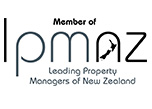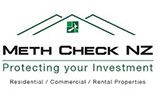Heating & Ventilation in your Rental Property
June 28, 2018 at 12:56 PM
The new Healthy Homes legislation was passed at the beginning of December 2017. We are unsure at the moment of what this will mean exactly in regards to heating and ventilation however in the meanwhile both the landlord and tenant have responsibilities to ensure the home is dry and well-ventilated.

It’s no surprise that warm and healthy homes are good for both tenants and landlords. If condensation is left uncontrolled, your house can become cold, damp and unpleasant to live in. A dry and well-ventilated home is healthier for tenants as dampness can lead to problems and can contribute to health issues, particularly in children. The average New Zealand family produces around eight litres of moisture in the home each day from activities like cooking and showering.
Landlords responsibilities
If you are a landlord who provides heating and ventilation for your rental property it is your responsibility to maintain this. If there is a usable fireplace it is the landlord’s responsibility to ensure the chimney is safe and regularly cleaned. If there is a ducted heating and ventilation system, then maintenance is also the responsibility of the landlord.
If you provide a dryer in your rental property it is essential you are providing the correct type of dryer for the home. If you can adequately vent a vented dryer then this is the most cost effective machine to supply into your rental property. Where it is not possible to vent the dryer to the outside it is recommended you invest in a condenser dryer which acts in a similar way to a dehumidifier to dry clothes. Extractor fans are often not sufficient to remove the condensation generated by a vented dryer and this may also create issues with tiny particles of lint venting into the house.
Tenants are responsible for adequate ventilation
Tenants are to ensure that they keep their home adequately ventilated to prevent the build-up of mould and/or mildew. Activity in the home creates airborne moisture and when the moisture is not removed, it can condensate on surfaces. The moisture is produced by everyday activities such as cooking, washing, bathing and exercise. Your breathing also creates moisture in the air.
How to tackle sources of dampness inside
Eliminate available moisture – dry washing outdoors rather than indoors.
Extract moisture by using extraction fans (vented externally) in the kitchen, bathrooms and laundry. Extractor fans should be:
- Vented to the outside in your bathroom, kitchen and laundry - fans should not vent into your ceiling space
- Turned on before having a shower or bath - shut the bathroom door and leave the bathroom window open slightly to improve the fan's effectiveness
- Left running for 15 – 20 minutes after a shower or bath with the bathroom door shut and window open until most of the moisture has cleared
- Cleaned regularly to maintain their performance.
Avoid unflued gas heaters as these release large amounts of moisture and toxic gases into your house, and can also be a fire hazard!
Keep furniture away from external walls. It’s best to leave a 10cm or more gap to avoid mould growing behind furniture in winter.
Keep mattresses off cold floors. Put all mattresses on a bed base to let air circulate underneath. When 4 people are sleeping in a house, this produces 1.12L per day of moisture!
Leave wardrobes slightly open for ventilation.
Air out the home regularly – open doors and windows to create a cross draft, or use a ventilation system if this is provided.
Keep the home warm – insulation and heating improve ventilation effectiveness and reduce the risk of mould growth on cold surfaces.
If you have a heat pump / air conditioning unit read the user manual to ensure you get the best use of the unit’s features and to avoid unnecessarily high electricty bills because they are not being used correctly. It’s best to set your heat pump at 18°C, and let the room heat up gradually, instead of blasting the heat, getting too hot and shutting it down.
If you have any questions or concerns regarding heating and ventilation in your rental property please feel free to contact us on 09 271 5200.






